Which two statements about Security Fabric communications are true? (Choose two.)
Refer to the exhibits, which contain the partial configurations of two VPNs on FortiGate.

An administrator has configured two VPNs for two different user groups. Users who are in the Users-2 group are not able to connect to the VPN. After running a diagnostics command, the administrator discovers that FortiGate is not matching the user-2 VPN for members of the Users-2 group.
Which two changes must the administrator make to fix the issue? (Choose two.)
Refer to the exhibit, which shows the modified output of the routing kernel.
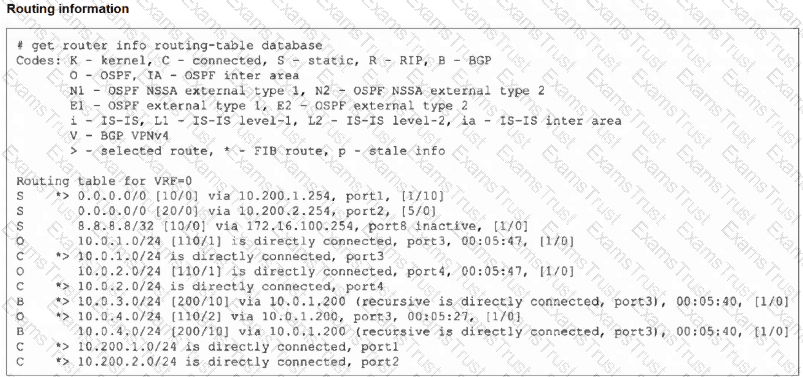
Which statement is true?
In which two slates is a given session categorized as ephemeral? (Choose two.)
Which three common FortiGate-to-collector-agent connectivity issues can you identify using the FSSO real-time debug? (Choose three.)
Refer to the exhibit.
The exhibit shows the output from using the command diagnose debug application samld -1 to diagnose a SAML connection.

Based on this output, what can you conclude?
Refer to the exhibit, which shows the output of get router info ospf neighbor.

What can you conclude from the command output?
Exhibit.

Refer to the exhibit, which shows the output of a session. Which two statements are true? (Choose Iwo.)
In IKEv2, which exchange establishes the first CHILD_SA?
Refer to the exhibit, which shows the output of a policy route table entry.

Which type of policy route does the output show?
Refer to the exhibit, which shows a partial web filter profile configuration.
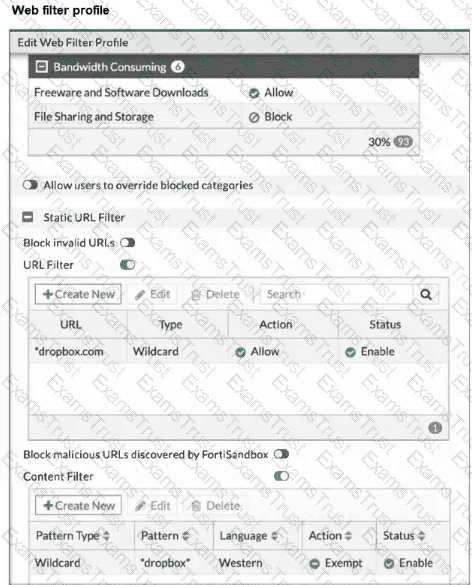
The URL is categorized as File Sharing and Storage.
Which action does FortiGate take if a user attempts to access
Refer to the exhibit, which shows the output of the command get router info ospf neighbor.

To what extent does FortiGate operate when looking at its OSPF neighbors? (Choose two.)
Which two statements about conserve mode are true? (Choose two.)
Refer to the exhibit, which shows the port1 interface configuration on FortiGate and partial session information for ICMP traffic.

What happens to the session information if a routing change occurs that affects this session?
Which authentication option can you not configure under config user radius on FortiOS?
Refer to the exhibit, which shows a session entry.
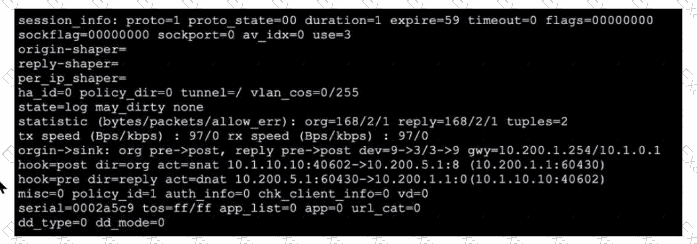
Which statement about this session is true?
Refer to the exhibit.
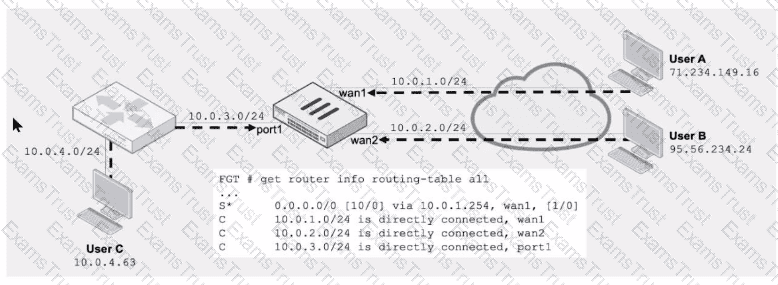
Assuming a default configuration, which three statements are true? (Choose three.)
Refer to the exhibit, which shows the output of diagnose sys session list.
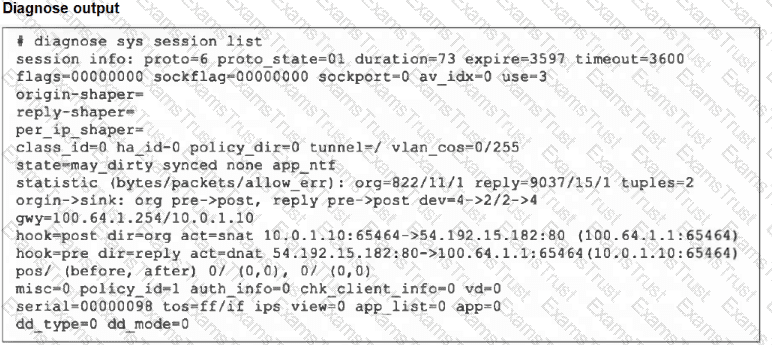
If the HA ID for the primary device is 0, what happens if the primary fails and the secondary becomes the primary?
An administrator wants to capture encrypted phase 2 traffic between two FotiGate devices using the built-in sniffer.
If the administrator knows that there Is no NAT device located between both FortiGate devices, which command should the administrator run?